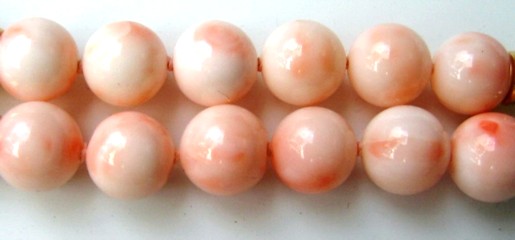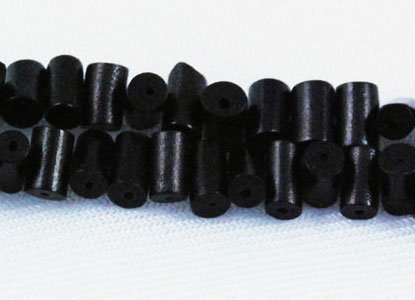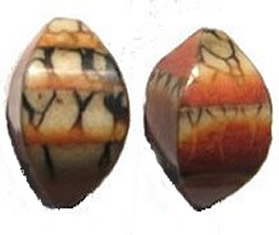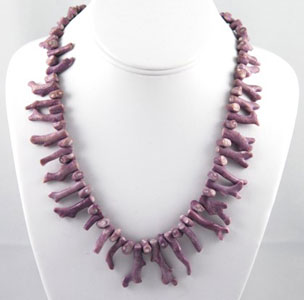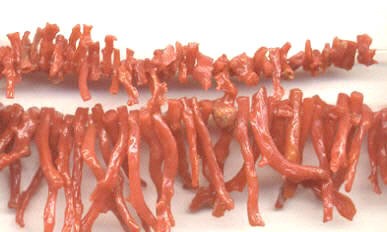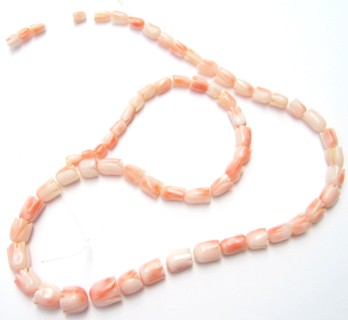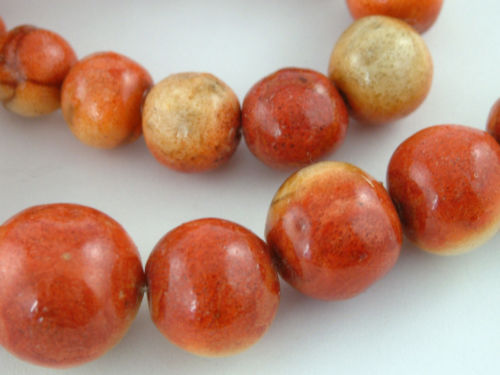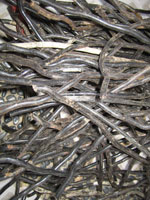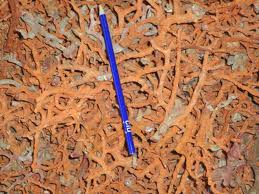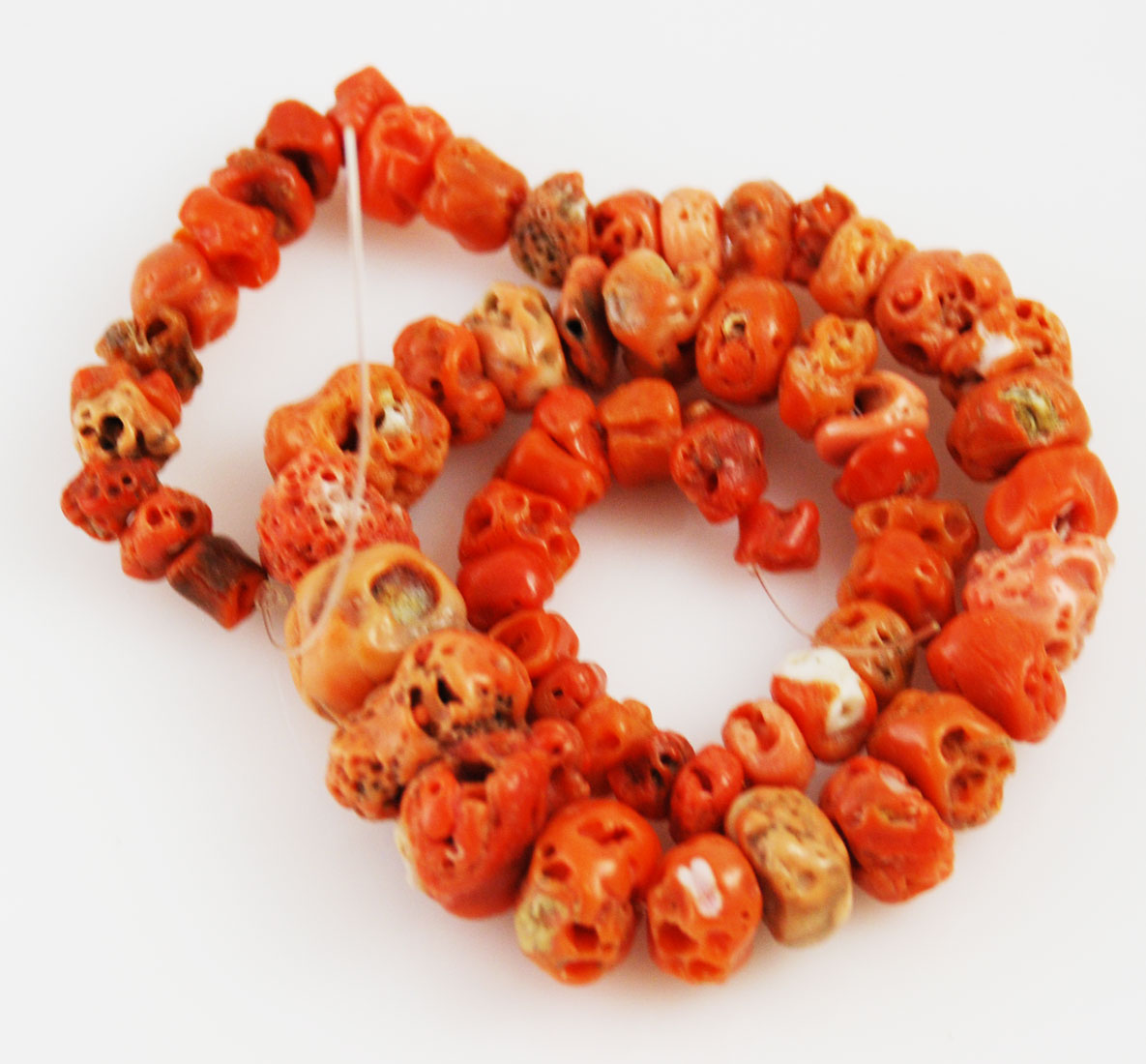Coral Beads
Since ancient times, peoples of all cultures, races, and religions have used beads not just for personal adornment. Beads were used as money, protection against evil powers, and to display wealth and power. The first beads were thought to be worn as talismans to protect from evil forces. early beads were made of every conceivable type of material easily found by man. Some of the oldest known beads are 37,000 - 38,000 years old made from Ostrich Shells, seashells, and bones. Many other ancient beads have been found made from readily available materials, such as coral, teeth, rocks, seeds, wood, ivory, horn and some plant resins. They have long been valued, traded, and adored by millions of people around the world. Every culture has used beads in some form or fashion.
Coral is the calcareous skeletons of marine animals. It has been valued in jewelry making for thousands of years. It has long been popular in a multitude of cultures, many of them believing coral has special powers. Italy became the hub of coral production and carving. Coral beads are often used in their branch form or cut and polished into many other shapes. The white, gray and light colors are even dyed in a rainbow of hues. This page is going to show you many examples of coral beads.
Natural Coral Beads
Here are some pictures of coral in their raw or natural state, before they are polished and carved or formed into beads. We think its important to see coral like this, it will help you learn to recognize real, genuine coral.
Shapes of Coral Beads
Coral is often used in its natural branch form, which preserves the most material when cutting and polishing. Coral is relatively soft, so it is easy to shape and carve. There is no limit to the shapes of beads, they are often cut into rounds, barrels, ovals, rice and more. Many of the pink and orange corals are also carved into flowers. Some of the larger sponge varieties are even inlayed with silver, brass and gemstones. They would often overlay mosaic designs on plastic for stability. 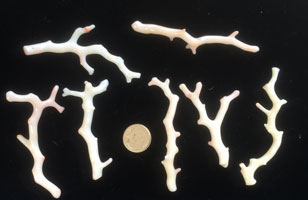
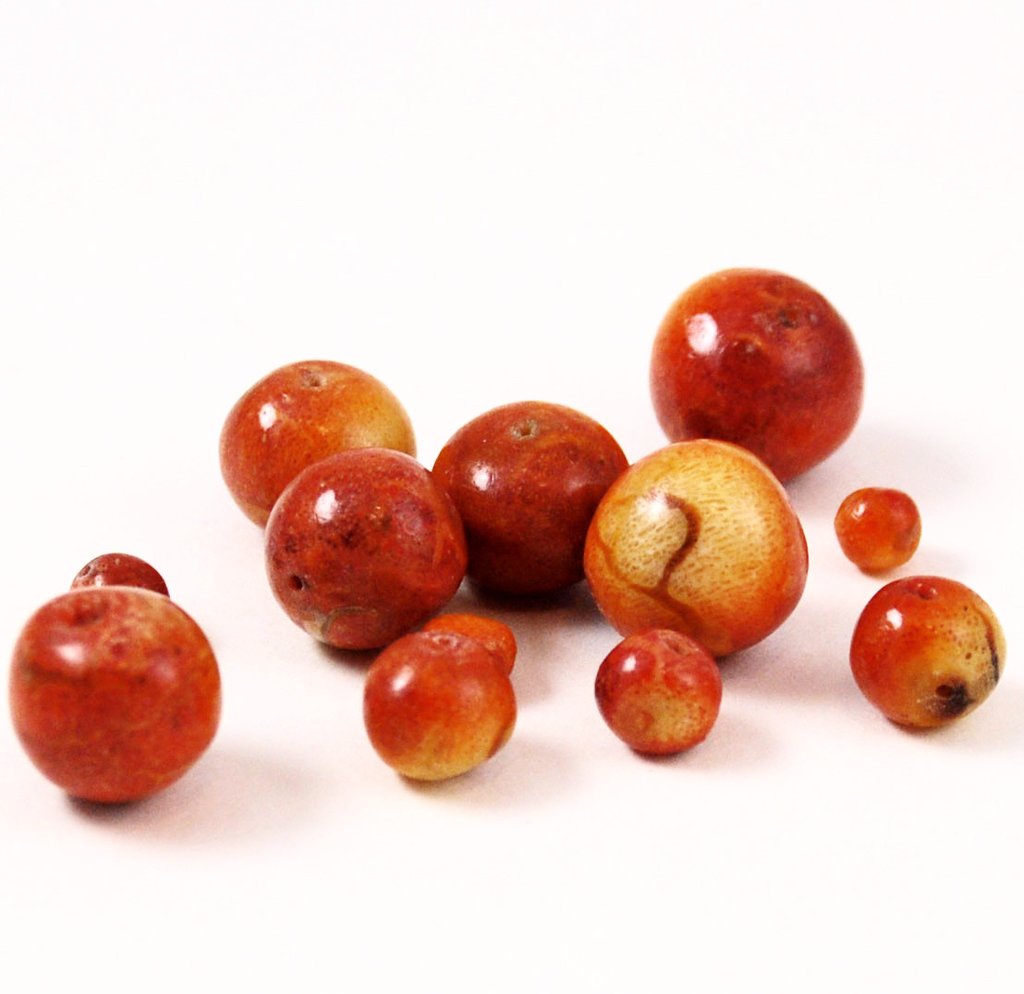
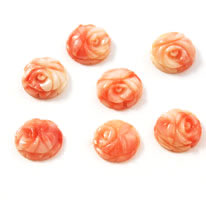
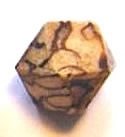
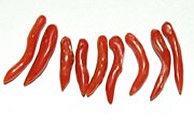

Black Coral
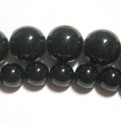 was given the scientific name Antipathes Grandis, which means against-harm-great in Greek. It is thought to be in the first stage of decay and is found just below the surface and down to depths of 300 feet. Hundreds of years ago it was discovered in the Red Sea and prized by the rulers of Asia Minor. They used pieces for personal adornment and to ward off illnesses and evil spirits. If you look at Black Coral under magnification or in the raw state you will see thin golden brown rings or markings on its tree like branches. It can be polished to remove the rings and to get a beautiful very shiny surface with an even black color. You will be surprised by the feel of black coral and how light weight it is. I have heard it described as having a feel and weight similar to horn. Under magnification or in the raw state you will see thin golden brown rings or markings on its tree like branches. Once abundant in the Persian Gulf area and other oceans, but hat has been exhausted. In the 1950's Hawaiian black coral was found at extreme depths exceeding 175 feet. I have been told by several dealers that starting in the later half of 2012, they have no longer been able to import it into the USA. I expect the prices of black coral will only go higher. Golden coral is found off Hawaii and has a similar plastic or resinous look with visible pores. Here are some pictures of interesting ways black coral is cut into beads.
was given the scientific name Antipathes Grandis, which means against-harm-great in Greek. It is thought to be in the first stage of decay and is found just below the surface and down to depths of 300 feet. Hundreds of years ago it was discovered in the Red Sea and prized by the rulers of Asia Minor. They used pieces for personal adornment and to ward off illnesses and evil spirits. If you look at Black Coral under magnification or in the raw state you will see thin golden brown rings or markings on its tree like branches. It can be polished to remove the rings and to get a beautiful very shiny surface with an even black color. You will be surprised by the feel of black coral and how light weight it is. I have heard it described as having a feel and weight similar to horn. Under magnification or in the raw state you will see thin golden brown rings or markings on its tree like branches. Once abundant in the Persian Gulf area and other oceans, but hat has been exhausted. In the 1950's Hawaiian black coral was found at extreme depths exceeding 175 feet. I have been told by several dealers that starting in the later half of 2012, they have no longer been able to import it into the USA. I expect the prices of black coral will only go higher. Golden coral is found off Hawaii and has a similar plastic or resinous look with visible pores. Here are some pictures of interesting ways black coral is cut into beads.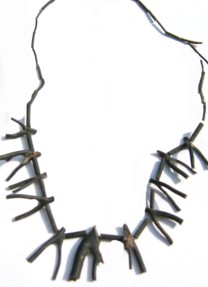
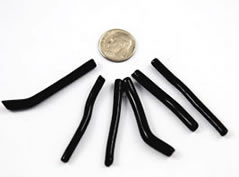
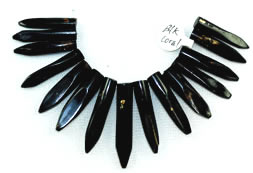
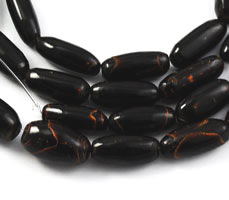
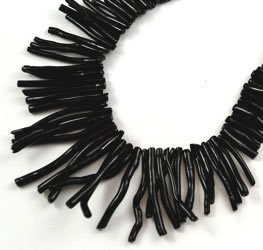
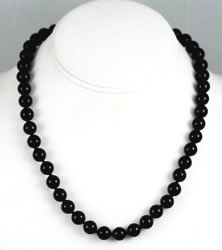
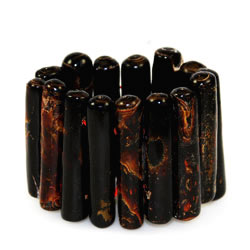
Blue Denim and Blue Sponge Coral
Blue Ridge Coral, Heliopora Coerulea, and Blue Denim Coral grow in the Indo-pacific region and are now difficult to find. These very popular corals have a soft denim color. They are a porous variety and are often lacquered. Blue coral is also thought to be coral in a stage of decay as the color is often only on the tips or surface. There is now a blue variety of sponge coral in the market place that is very pretty, it is denser with less visible pores. A heishe variety was unisex and very popular in the 1960-70's and was a staple of Hawaiian tourists.
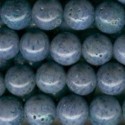
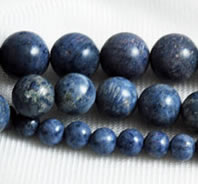
Rare Corals
Several varieties of lace, sponge and needle corals come in some rare varieties and colors. Shades of purple and lavenders are a personal favorite of mine. I haven't seen any new beads in these colors since the 1980's and even then they were hard to find. They are now extremely rare and getting collectible. Some have brown or whitish tips on the branches. The larger skeletons are often carved into beads. Tiger Sponge Coral comes in a tan color with interesting black and brown veining. They resemble a tiger's skin and are all natural. There are copies in the market that are painted limestone. Apple Coral is another variety of sponge coral. The vivid colors on these beads range from light yellow to dark orange with some of the brown markings you see in Tiger coral. The color is 100% natural and just gorgeous. They were plentiful in the 1970's, but they can no longer be imported into the USA. They are also copied with painted limestone. Most of these sponge beads have been sealed & polished to a high gloss. 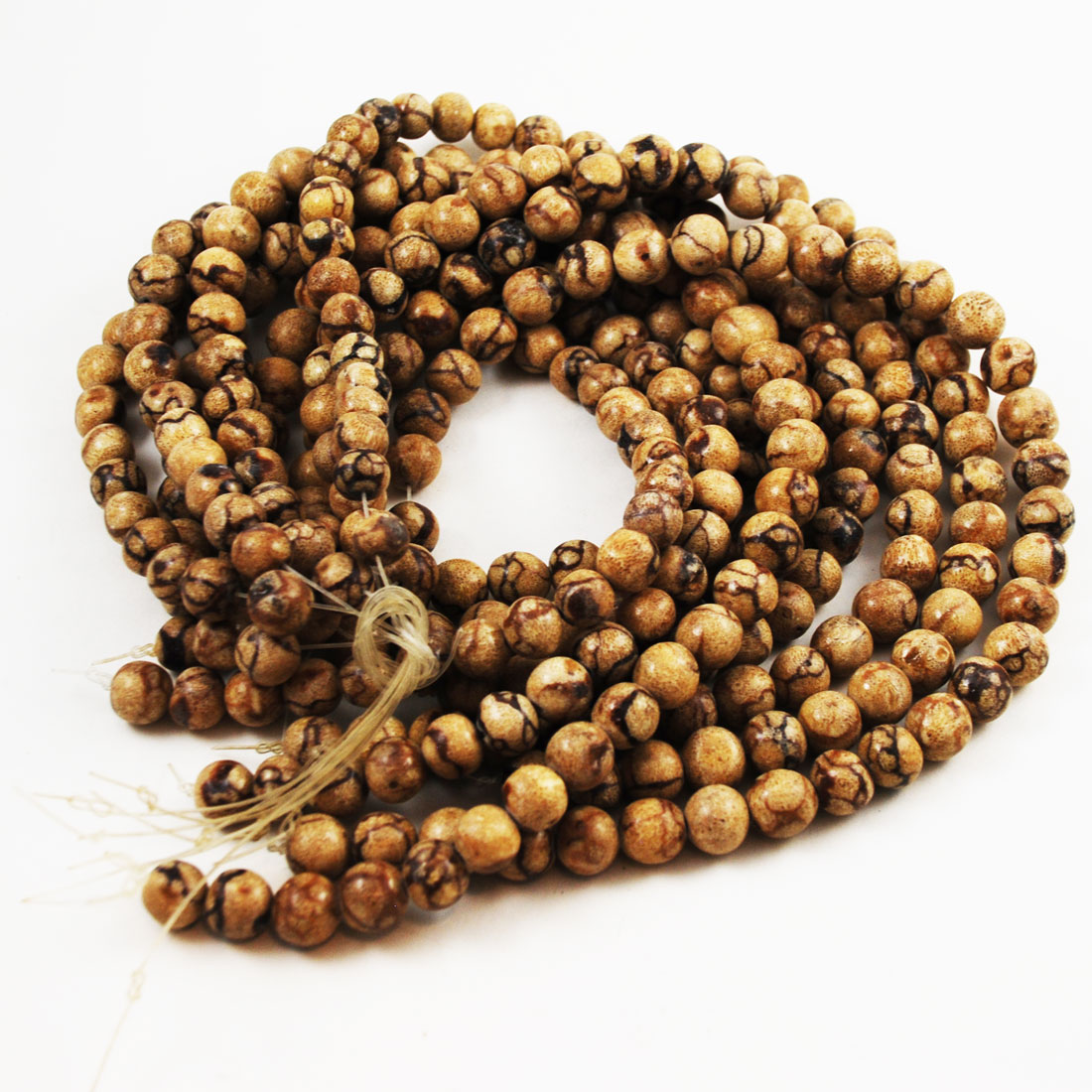
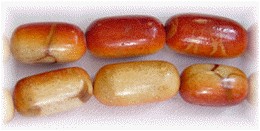
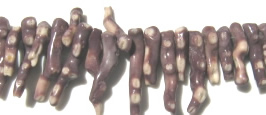
We also have a great supply loose coral beads available, if you want to make your own jewelry. We have the most comprehensive collection on the web. See our coral beads that are for sale.
